This post may contain references or links to products from one or more partners of our parent company and/or subsidiaries of our parent company. For more information, visit this page.
Updated August 31, 2023
Wondering how to replace the flooring in your home with a more scratch-resistant option? We hear you. Scratch-resistant flooring is basically a necessity or anyone with dogs, cats, or other rambunctious pets like toddlers (joking!).
Top Rated Picks for Pets and Kids:
If you have pets and kids, there’s likely one thing you don’t have: time. Why not just order some samples from our favorite brands? They all prioritize durability in their products and are a great fit for your family home.
Proximity Mills
Visit their site | Find a retailer | Order samples
Newton
Visit their site | Find a retailer | Order samples
Liberty Home
Visit their site | Find a retailer | Order samples
But with so many different types of flooring on the market, finding the perfect floor can be difficult. And when you’re forced to pick between seemingly similar options like linoleum vs. laminate, finding scratch-resistant flooring that’s also aesthetically appealing can seem almost impossible. But fear not! It can be done.
This guide will help you narrow down your flooring search. Below, we’ve picked our 7 favorite scratch-resistant flooring options that are built to last. We’ll explain each one in detail, outline their pros and cons, and show why these flooring styles are durable enough for toddlers, pets, and life.
#1. Vinyl: A Popular and Scratch-Resistant Flooring Option
Even with all of the other types of flooring around, there’s a reason vinyl has become so popular. It’s durable, it’s affordable, and it doesn’t require much maintenance. Additionally, this synthetic material can be made to look like almost any other flooring option, giving you tons of creative liberty.
There are two main types of vinyl flooring
As we said, vinyl can really mimic stone, tile, and even intricate wood floor designs. However, there are two main styles of vinyl that you’ll need to understand in order to pick a durable and lasting floor: vinyl sheet and vinyl plank (aka LVT).
What is vinyl sheet flooring?
Vinyl sheet flooring is cut and rolled into large sheets. It’s a great scratch-resistant flooring option, but you’ll need to be careful when moving heavy furniture around on it to avoid gouging the top coat.
Vinyl sheet flooring is most common in kitchens and bathrooms because it’s easy to clean and maintain. It’s also extremely affordable and comes in a wide variety of patterns and textures. Best of all, because it’s laid down in a single layer, vinyl sheet is waterproof! Just remember to hire an expert for installation; if installed improperly, moisture can leak underneath and cause it to bubble.
What is vinyl plank flooring (aka LVT)?
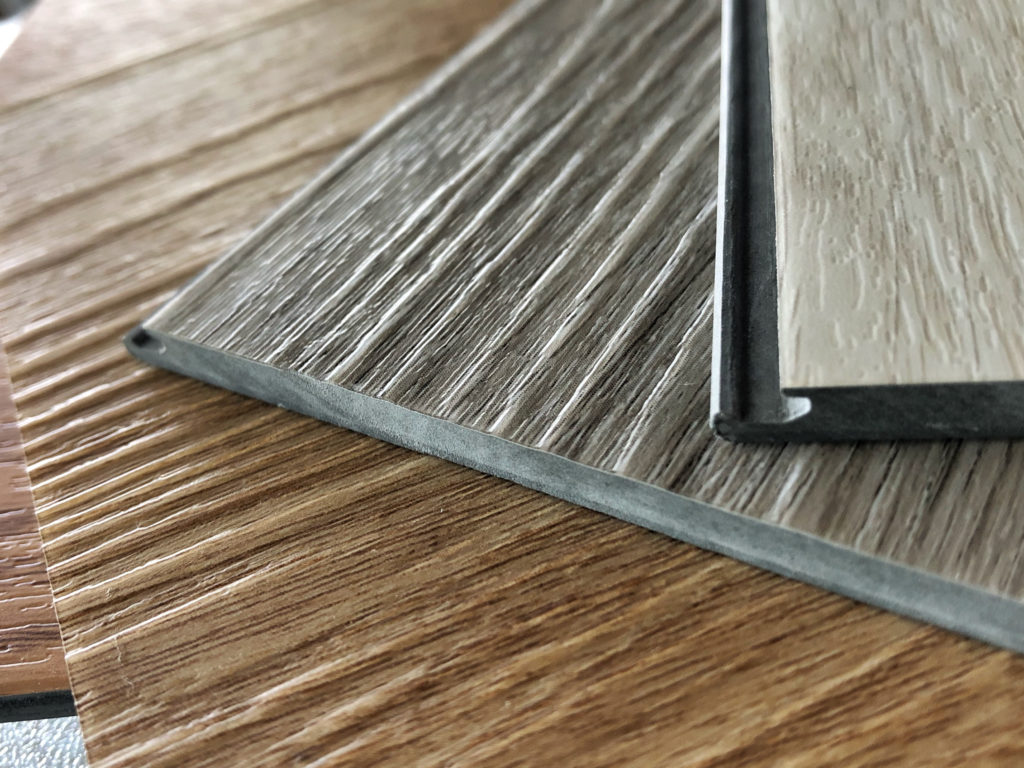
One of the best types of vinyl flooring, vinyl plank is extremely popular thanks to its realistic look, easy installation, extreme durability, and affordable price.
Also known as “LVT” (aka luxury vinyl tile), this PVC-based product comes in planks or tiles rather than in a roll. It’s thicker and more rigid than sheet vinyl, and it’s made up of three layers: a rigid or semi-flexible base layer, a design layer, and a protective wear layer.
Vinyl plank can be glued down, but it’s more commonly installed as click together-flooring. If you’re unfamiliar, click-together floors are installed by snapping planks together using built-in “click-lock” grooves. The resulting floor then rests over the subfloor or underlayment, creating what’s known as a “floating floor”.
Some vinyl plank products also come with a fourth layer designed to cut down on squeaking, improve underfoot feel, or address any of the other disadvantages of floating floors. As a result, vinyl plank is continuing to gain in popularity—in fact, LVT is expected to be a $31.4 billion industry by 2024.
Which type of vinyl is more scratch-resistant for dogs and cats?
Because of its design, vinyl plank takes the cake when it comes to longevity, water-resistance, and durability (did we mention it’s waterproof?) Vinyl planks are pressed into shape using extreme pressure and heat. This process creates hard bonded layers that will stand the test of time—and kids.
Additionally, if there are any accidents, replacing one vinyl plank is much easier than replacing a section of vinyl sheet flooring. Plus, when small sections of vinyl sheet are repaired (rather than replacing the entire sheet), water can seep in through the seams. This makes any “little” rips or gouges in the vinyl a much bigger and more costly issue.
Pro tip: if you’re looking for the best vinyl plank flooring brands, skip the box store stuff. Home Depot’s LifeProof vinyl flooring, for example, is not the best product out there. Go for a smaller brand like Proximity Mills instead.
Best Brands of 2024
#2. Laminate: A Time-Tested and Durable Solution
Interested in buying hardwood floors but not ready to stomach the cost—or the possibility of scratching? Say hello to laminate. This classic flooring choice has really come a long way in the past 50 years. It’s a stylish and sturdy option for anyone looking for affordable, water-resistant, and scratch-proof hardwood floor alternatives.
What is laminate flooring?
What is laminate flooring, exactly? It’s a dense composite material typically made up of three layers. Starting with the bottom, they are the:
- Base Layer: This core layer is made of plywood or high-density fiberboard and provides the strength for the rest of the floor. This is the same base that is used in all the best engineered wood flooring products, too.
- Image Layer: This is the exciting part for homeowners! An image layer is essentially a photo-realistic image of wood, stone, tile, or whatever the laminate flooring is mimicking. Most often, it resembles wood (which is why some people think of laminate as a type of fake wood flooring).
- Wear Layer: A protective and water-resistant plasticate layer on top guards against both fading and damage. This third layer is what makes laminate so scratch-resistant.
The pros and cons of laminate flooring
One of the biggest advantages to laminate is that it can mimic the look of most types of wood flooring at a fraction of the cost. As we mentioned above, it’s also extremely hard, so your pets can get the zoomies without destroying your floors.
The downside to laminate is that it’s not completely waterproof, and the base layer can swell if water seeps between the planks. And while it’s built to last, you can’t refinish or repair laminate if it’s damaged—you just have to replace it. Lastly, if you purchase a cheaper laminate product, it can sometimes look a little… cheap!
But again, when it comes to scratch-resistant flooring, laminate is a tried-and-true option. Brands like Pergo (who actually invented the material back in the ‘70s) offer hundreds of different types. Check out some Pergo reviews if you’re interested in learning more.
#3. Tile: The Original Scratch-Resistant Flooring
People often compare tile vs. laminate, so now that we’ve talked through some great laminate options, it’s time we dive into tile. There are a few basic types of tile that you’ll need to consider: ceramic, porcelain, stone, and cement. Some are better than others when it comes to durability, but we’ll get into that below. Here’s a breakdown of each one:
Ceramic tile
When you think of rustic-looking tiles (terracotta, for instance), you’re thinking of basic ceramic. Ceramic is made of fired clay and it’s a hard and durable substance—probably not a big surprise, given that some ceramic pottery can last for thousands of years. And thanks to its high Coefficient of Friction Rating (which we use to measure slip resistance) ceramic makes a great indoor or outdoor flooring option.
Porcelain tile
What’s the difference between porcelain and ceramic? Technically speaking, porcelain is a type of ceramic—but it’s created from a more refined clay and baked at a higher temperature. This process makes it an extremely hard and scratch-resistant flooring choice. But it also makes it a bit more slippery.
Thanks to its excellent water resistance, you can find porcelain tile in bathrooms around the world. And while traditional tile installation can be a hassle (due in part to an ongoing installer shortage) advances like snap-together tile flooring have made it easier than ever to have a porcelain tile floor in your home.
Stone tile
Stone flooring is made from different types of stone like sandstone, marble, and granite. There are dozens of stone flooring types to choose from, but remember: some may be more scratch-resistant than others.
Cement tile
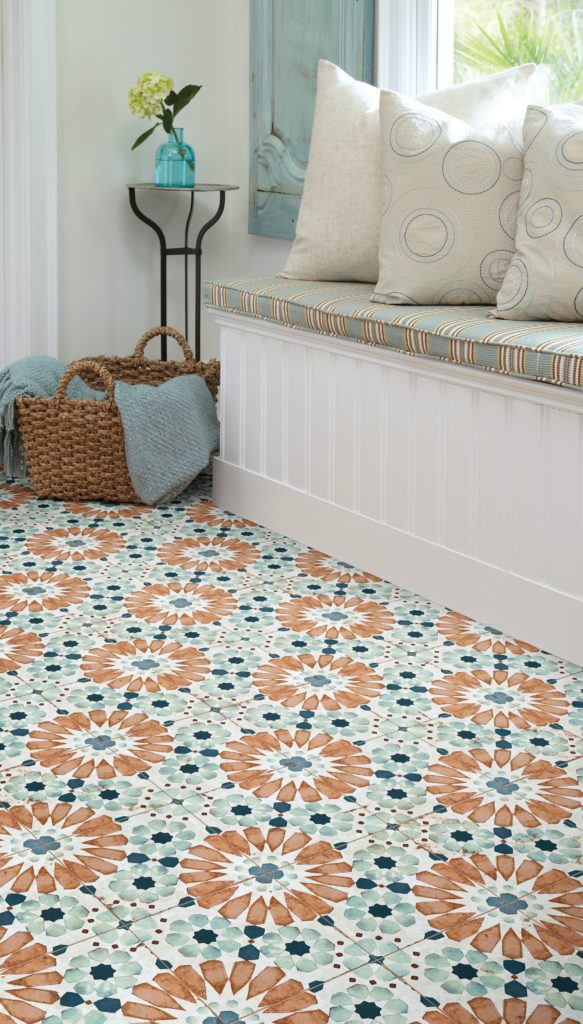
Cement tiles have been around since the 19th century and have since made their comeback in modern design. The tiles can be extremely unique and can fill your home with breathtaking patterns and colors. However, they require quite a bit of upkeep (sealing and the like), so you may want to steer clear of these if you’re a cat or dog owner.
Which tile is the most scratch-resistant for pets and kids?
Many people end up comparing tile vs. wood floors, as both of these types of flooring are traditional, time-tested, and absolutely beautiful. But at the end of the day, tile wins out as far as scratch-resistance is concerned—and unglazed porcelain is at the top of the tile list.
Porcelain tile is super dense, and if you buy it unglazed, the color of the tile will be the same throughout each piece—so a small scratch or chip won’t be as noticeable. Plus, porcelain is waterproof—so any accidents from a new puppy won’t damage your floors.
#4. Bamboo: Naturally Strong
Bamboo is an awesome option when it comes to scratch-resistant flooring because it’s incredibly strong. However, not many people know what bamboo flooring is really made out of, because it can look just like some of the best hardwood floors on the market! It’s actually made from bamboo… grass.
What makes bamboo a scratch-resistant flooring option?
When it comes to the best bamboo flooring, you’ll find that some options can be more than twice as hard as oak flooring. That’s crazy! And while bamboo floors can be made from vertical or horizontal bamboo planks, the most durable and scratch-resistant bamboo floors are made from shredded bamboo fibers mixed with a tough resin—aka strand-woven bamboo.
Additionally, bamboo floors can come as carbonized or non-carbonized products. Carbonized bamboo is treated with high levels of heat and pressure in order to change its color, but it also weakens the bamboo.
All of that to say: if you select an uncarbonized, strand-woven bamboo floor, you’re choosing something that’s multiple times more scratch-resistant than even the most durable wood flooring choices.
How affordable is bamboo?
Bamboo is reasonably cost-efficient at $4 to $10 per square foot. However, the price will vary by the style you purchase. Carbonized bamboo is often more pricey because of the long treatment process that it goes through.
This is often when people begin to consider bamboo flooring vs. laminate (the cost differences can be significant), but the decision will come down to your personal preference.
The pros of engineered bamboo flooring
Just like some of the best hardwood floor brands, bamboo sellers make both solid planks and engineered options. However, there are some engineered bamboo flooring pros and cons to consider. Engineered bamboo is even more sustainable than solid bamboo; it’s available in a variety of options, and can even be refinished. On the other hand, engineered bamboo flooring can be more susceptible to water damage than its solid counterpart. Additionally, engineered bamboo can sometimes cost more than solid bamboo flooring.
#5. Poured Concrete: Your Scratch-Resistant Flooring Miracle
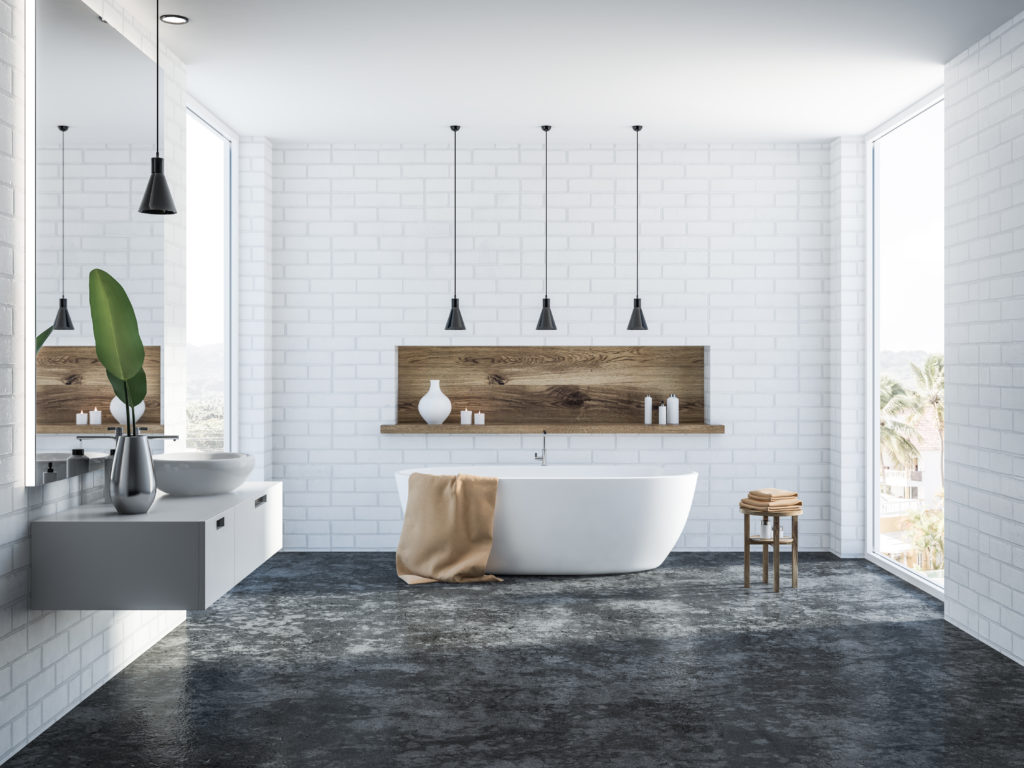
Poured concrete has become an extremely popular floor over the last few years, and we know why! A concrete floor can make any home look like a Manhattan flat in no time. It provides a chic look with minimal maintenance, and it’s durable as heck.
What is poured concrete?
Poured concrete flooring is quite literally… concrete that’s poured and polished. To create this look, your old flooring must be removed to expose your existing concrete subfloor (what is subflooring, you ask?) Then, if there are any areas that need to be repaired, fresh concrete is poured over the top. A coat of sealer is added on top to give the floor strength and shine, though it will need to be reapplied yearly to keep your polished floor from looking like a creepy unfinished basement.
But concrete doesn’t have to look like… well, concrete. In fact, concrete flooring that looks like wood is getting more and more popular, and installing it is just as easy as installing any other concrete floor. Talk about a win-win!
Concrete flooring pros and cons
One big pro of poured concrete is—no surprise—its durability. A yearly sealer will continue to make the floors water- and scratch-resistant. On the other hand, needing to do yearly maintenance could be considered a downside, so keep that in mind too. Another potential downside is that concrete is known to be very cold, so you may need to put down a couple of Home Depot carpet tiles to provide some warmth and absorb some noise.
#6. Cork: A Different Kind of Scratch-Resistant
Aside from keeping your vino fresh, cork is also a great scratch-resistant flooring option. Cork is an extremely sustainable material, it’s great at muffling sounds, and it prevents scratches. Yes, your pets and children can feel free to run as fast as they can, and you will remain headache-free. We call that a win.
If you’ve been looking at the cork flooring Lowes sells and you feel completely overwhelmed, here’s what you need to know about this amazing flooring material.
What is cork flooring?
Cork flooring is made from the leftover bi-product of cork harvests. These leftovers are mixed with resins and other natural products to create a flooring surface. Talk about eco-friendly!
The cork harvest is super sustainable as well. Cork actually comes from the bark of cork trees rather than the wood of cork trees. This means that after harvest, the tree is left alive to continue growing. This process doesn’t harm the trees at all—in fact, the trees can remain healthy for another 250 years!
What are the different types of cork flooring?
There are three general types of cork flooring: cork planks, cork tiles, and cork sheets. Cork planks are often one of the best cork flooring options, and can be installed in the same way as any other flooring planks. Cork tiles, on the other hand, are usually glued to your home’s subfloor. Cork sheets are more common for commercial flooring, but they can be used as underlayment too.
What are the pros and cons of cork flooring?
When it comes to the pros and cons of cork flooring, there are several reasons why cork can make a great candidate for your future floor.
Cork is resistant to mold and mildew because of its naturally anti-microbial properties. The material also holds in heat, so your pets and kids can stay warm all winter long… even when they choose to sleep on the floor rather than the three beds you’ve purchased for them.
We mentioned this briefly, but cork is sound-dampening. This is a true blessing for parents and pet owners. And of course, cork is also durable and scratch-resistant. The softness of the cork gives it an “elastic memory” to help keep its shape. This is great because it will actually repair minor scratches on its own. A true miracle material! Lastly, compared to the typical wood flooring cost, cork is slightly cheaper.
Unfortunately, there are a few cork flooring cons too. Cork does need to be resealed periodically, which can be a hassle. This type of flooring can also be damaged by heavy use, so you’ll want to be careful if you decide to move your furniture around.
#7. Carpet Tiles: Scratch-Resistant Flooring on a Budget
In love with your floor but need to protect it? Consider a scratch-resistant but temporary fix using peel-and-stick carpet tiles. We mentioned them a bit earlier, but these are a great solution if you’re looking for quick cover because they’re so easy to install and remove.
Pros and cons of carpet tiles
If you’re wondering how to install carpet tiles, the answer is quite simple. Once your floor is cleaned, it’s as simple as peeling off the backing and placing them where you want them. When it comes to do-it-yourself flooring, it doesn’t get much easier than that. Carpet tiles can also absorb sound if you don’t have many fabric surfaces in your home. There aren’t many cons when it comes to carpet tiles aside from them not being permanent.
Ready to Choose Your Own Scratch-Resistant Flooring?
As you can see, there are tons of flooring options to choose from in your search for scratch-resistant surfaces. Now the question is: “where do I start”?
Rest easy, friend. We know how overwhelming it can be to try to find a reputable, well-reviewed flooring retailer—so use this flooring dealers near me search to find the perfect flooring store in your area.
Still haven’t decided on a floor? Check out the articles below for more information:
- Heating Wood Floors 101: Everything You Need to Know
- How Much Does it Cost to Replace Carpet With Hardwood?
- How to Install Hardwood Floors: A Step-by-Step Guide
- 9 Reasons The “Carpet vs. Hardwood” Debate is Silly
- Carpet vs. Laminate: Which is the Right Floor for You?
- Laminate vs. Hardwood Floors: Which are Better?
About The Author

Elizabeth Landy
June 2, 2020
Elizabeth is a public relations expert and freelance writer. She is obsessed with reality TV, professional sports mascots, and Doug the Pug (don’t tell her two cats). When she’s not writing, she’s probably reading, riding her bike, or FaceTiming her college best friends.
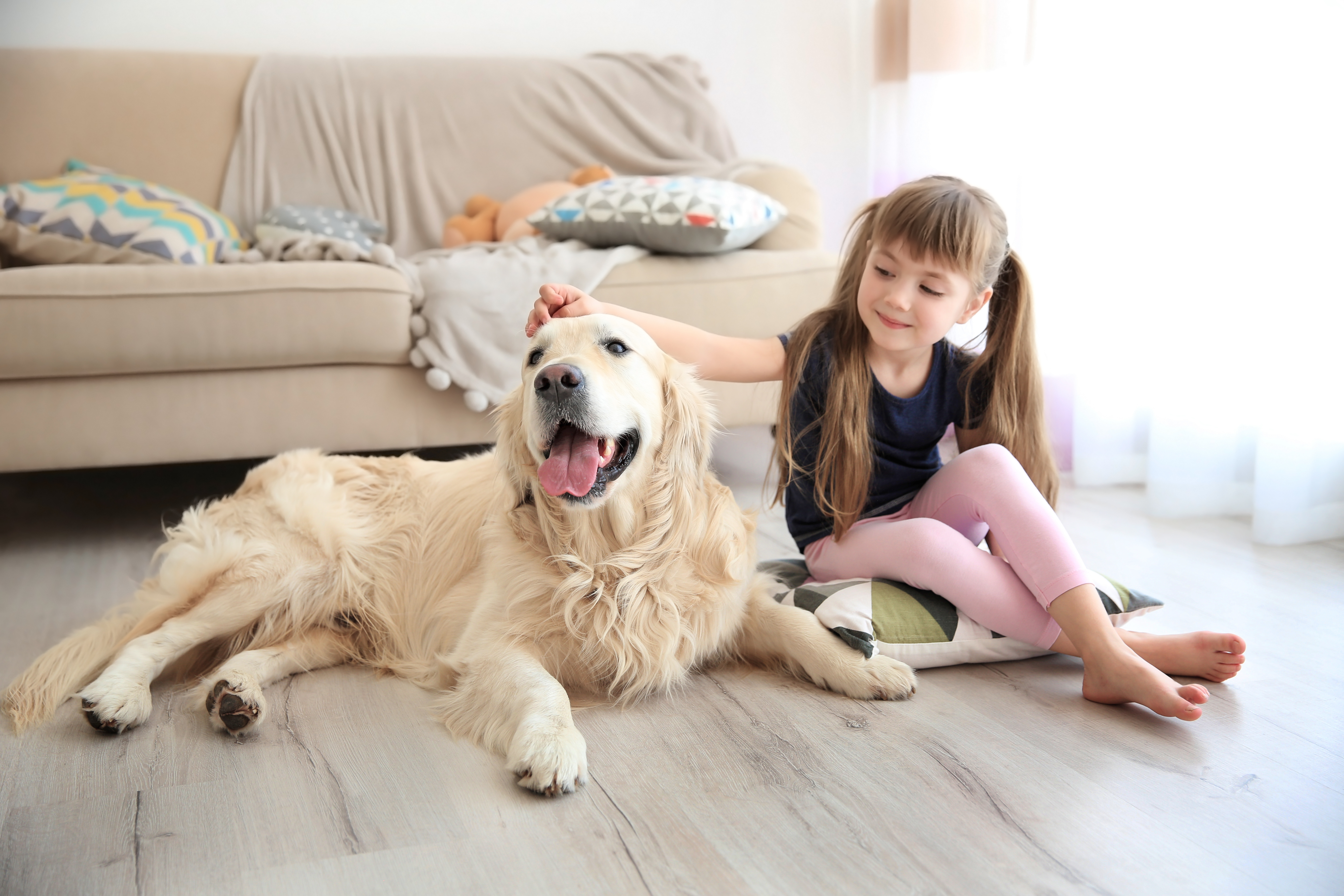
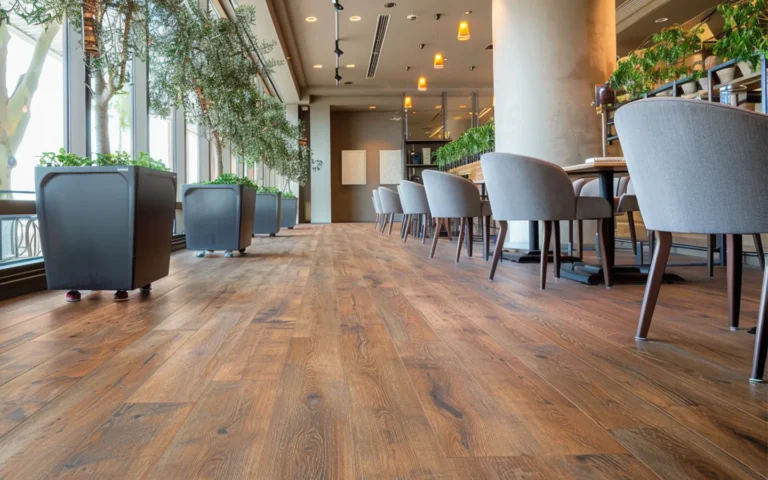

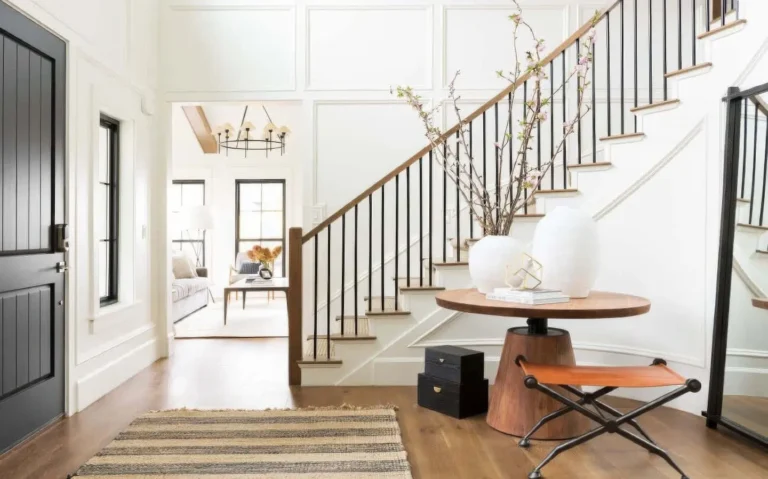

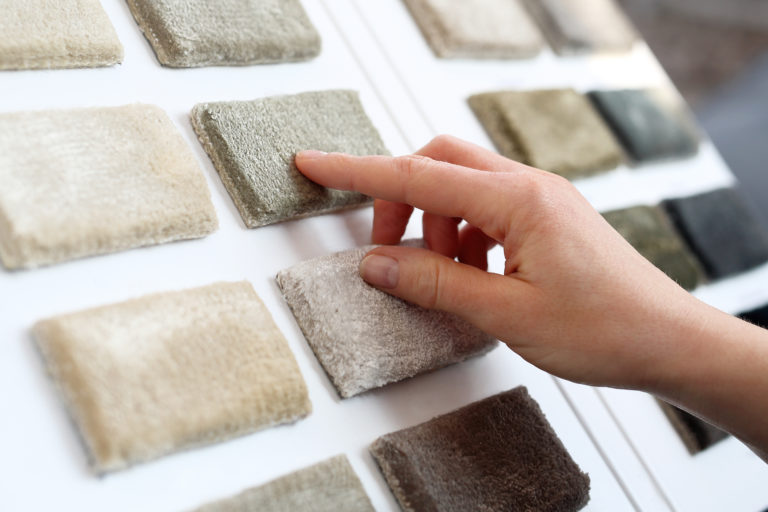

1 comment
Arden Jacobo
I want to read even more details about this topic. Can you suggest a list of sources for further investgation?